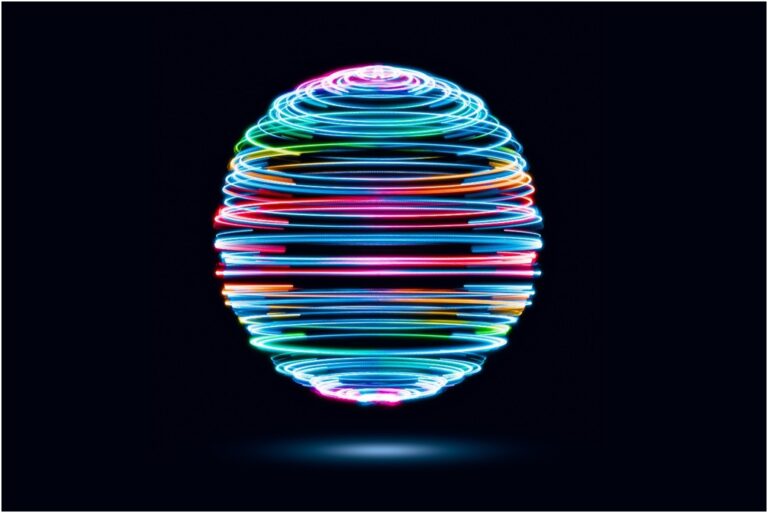A Xerox analysis reported in one of their publicity brochures says that colours used to convey essential information enhance focus by as much as 82% and increase brand recall by 80%. They also build a powerful image, and 83% of businesses are of the opinion that success in business is a result of the colour put on the brand label.
With all this verifiable data, we understand that brand colour is central to projecting your brand image. Selecting appropriate colours for your brand identity can indeed be a tough challenge. There are countless possibilities, but the most important thing to remember is that focus groups do not yield results unless they are well prepared for the colours they choose to define the meaning attached to the brand. Wielding such influence as colours do when the development of a brand identity system is concerned is rare.
The Impact of Colours on Consumers and Brand Perception
- Colours shape a brand’s identity and influence purchasing decisions.
- They play a vital role in corporate brand recognition, shaping consumer perception.
- Customers associate brands with colours, forming emotional and functional connections.
- Consumers attribute specific emotions and meanings to corporate logos and their colours.
- Recognisable brand colours enhance trust and familiarity. Colours help customers build strong relationships with brands.
- Corporate colours serve as a powerful symbol of brand identity.
By leveraging the right colours, businesses can create a strong visual presence that resonates with their audience and reinforces their brand message
Top ten insider tips for developing fascinating colour palettes for your brand
Choosing colours can be quite a task when building a brand’s identity. The colours should relate to the brand’s personality, business sector, target audience, existing trends, business objectives, customer view, and visual motifs. Here are the 10 insider tips
Capture inspiration on the go
Whether you’ve stepped out of the office, travelled, or even finished your meal prep, your laptop is now essential. You’re looking for brand identity inspiration—so what if capturing it was easier? Inspiration is all around you; take a moment to observe. Which colours spark your creativity the most? They’re there, waiting to help you bring your creative projects to life and market them effectively.
Use your colour wheel
What is the best colour that will make people trust your brand more? Using the colour wheel is the most effective approach to developing a solid brand identity. If your brand identity is primarily green, it would be logical to use striking green for your advertisement or marketing campaign, as there is a lot of greenery in nature. This is similar to pouring pink paint on walls or wood on furniture. Pick a replaceable colour after identifying the colour that goes with your product and the surrounding environment. Together, they will become the colours of your brand identity.
Borrow from Interior Design
Why not draw inspiration from other interior designs and borrow their colour schemes? Using borrowed colours to represent a brand is more accepted than you think. But then, every brand has a distinctive colour palette – some go with cosy, eye-popping colours, whereas others prefer subtle colours. Like almost anything in branding, the best solution will depend on your work sector. Interior designers use more saturated colours to attract people to shops and lounges. On the other hand, modern companies try to soak up the colours of the environment and design in a style-byu-the-house.
Save What Works Best
Whenever you spot a picture or an image with details with colours you like, save it because it might come in handy at some point.
Some colours are best avoided when designing your brand logo and identity, as they can significantly alter its meaning and make it appear less professional or appealing. One such colour is black. While some studies suggest that black conveys authority and is often linked to high-end brands, it may not always create the right impression for a professional logo. Choosing the right colours carefully is essential to ensuring your brand identity resonates effectively with your audience.
Focusing on colour selection now and choosing the best pleasing fonts later can boost consumer recognition by 80%, according to a study by Rebootonline. Brand recall can be impacted positively by colour associations. While crafting a logo, consider how the client would respond to the design. Always be ready to iterate and refine your design until it meets your expectations.
Try using the classic Pantone selections.
Your brand can be and must be something admirable. It may be iconic and trendy, but it is a distinguishing mark for your company from all the other meaningless copies for practical reasons. Try using our classic Pantone selection because the brand colours that have been chosen meticulously could have been put into consideration for them. It can be surprising how putting the true analogue colour into thought may assist you in achieving the most desirable brand colour.
Experiment with nature’s colour palette
The beauty of nature can do wonders and improve the beauty of a your brand. While designing, incorporate nature’s soft hues in your brand colour combination. Nature’s colours are appealing to one’s moods. Try blues from the sky, greens from the trees, and yellows from the sun while making sure to add some exhilarating colours, too, like bright teals, greens, or yellows. This way, your clients will have positive emotions associated with your brand.
Keep it to a maximum of 4 colours.
Nature’s colours are undeniably beautiful, but they should be used thoughtfully in branding. Remember the 80-20 rule—stick to three or four well-balanced colours to maintain consistency. Branding isn’t an exact science, but avoiding clashing colours and ensuring harmony is key. That said, don’t stress too much over brand colour marketing. Choosing the right font, avatar, and tone may seem more challenging in the grand scheme of things, but these elements will ultimately help you build trust with your audience more effectively.
Match colour to your brand’s mood
Branding comes hand in hand with colours and colour psychology. Each component of your brand will have a different impact on colour psychology, but it ensures that your customers buy your product with more confidence. Psychology works in many dimensions, and subconsciously, you can help yourself believe in the powers of colour. For instance, blue could evoke trust, loyalty, and sensuality while red triggers the most important features of your brand; passion, motivation, dynamic action, and energy gathering.
Find themed palettes on Pinterest
Utilise Pinterest to find what colours match with your brand. Construct a relatable and trend oriented pallette incorporating popular colours that does not lack excitement. It’s very easy to search for new combinations of colours on Pinterest. Simply look for colours that have been used before or are specific to a certain season. It is fairly simple to create brand-sensible combinations that fit within the trendy colours.
Follow websites that cater to the colourful enthusiasts
Websites like Colourlovers.com provide several colour palettes showing how they can be applied in a branding strategy. Watching videos is a great way to learn more because they explain how to do still-life paintings using complementary colours step by step. So you can match the colours appropriate for your brand image, many websites provide guidance for colours based on the product category.
Conclusion
Every colour you choose should capture your audience’s attention and create a lasting impression. The right colours can influence buying decisions, making your brand the go-to choice rather than just another option. In essence, a well-thought-out colour palette doesn’t just enhance aesthetics—it drives engagement, builds trust, and ultimately boosts sales.



